Visit South India
Houseboat Cruises
Have you ever gone cruising in a houseboat on the backwaters of Kerala? If you haven’t, make sure you do. This is easily amongst the most remarkable and unique experiences that Kerala has to offer.
Present day houseboats are huge, slow moving exotic barges used for leisure trips, and are in fact a reworked version of the Kettuvallams of olden times. In Malayalam language Kettu refers to ‘dwelling structures’ ‘Vallam’ means boat. These are boats with a thatched roof cover over wooden hulls. A portion of the Kettuvallam was covered with bamboo and coir to serve as a restroom and kitchen for the crew. Meals were cooked onboard and supplemented with freshly cooked fish from the backwaters. Today, appropriately called houseboats, they have furnished bedrooms, modern toilets, living rooms, kitchenettes and even balconies for angling. Sections of the curved roof of wood or plaited palm leaves open out to provide shade and allow an uninterrupted view of the backwater country.

The houseboats are either poled by local oarsmen or powered by engines. All of them have a crew comprising oarsmen, a cook and a guide. While converting kettuvallams into houseboats, care is taken to use only natural products. Bamboo mats, sticks and wood of the areca nut tree are used for roofing, coir mats and wooden planks for the flooring and wood of coconut trees and coir for beds. Nowadays, Solar panels are preferred for lighting.
While most boats are poled by local oarsmen, some are powered by a 40 HP engine. What is truly magical about a houseboat ride is the breathtaking view of the untouched and otherwise inaccessible rural Kerala that it offers, while you float in a relaxed way right through it. House boats are available at Trivandrum, Kollam, Kottayam, Allappuzha, and Ernakulam. Please contact
_Oct29.jpg)

Hill Stations and Wildlife Sanctuaries
The mountain ranges in Kerala are known as “the Kashmir of South India.” In addition to the beautiful mountain scenery, cooler temperatures, and multitude of accommodations, the area is covered with tea and spice plantations and nature reserves.

Wanayad is located 700 to 2000 meters above sea level in northern part of Kerala (north east of Kozikode). Wanayad Wildlife Sanctuary is rich in flora and faura. It was established in 1973 to conserve and protect the biological heritage of the region, which includes elephants, tigers, leopards and egrets and offers tourists camping sites, trekking, waterfalls, caves, bird watching, plants and trees. Muthanga Wildlife Sanctuary is the biggest wildlife area in the Malabar region of Kerala. It offers an elephant safari to view the animals, which include elephants, deer, tiger etc. Edakkal Cave was formed by the splitting of a huge rock, resulting in a rich pictographic gallery.
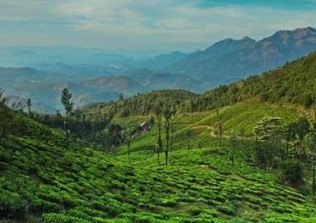
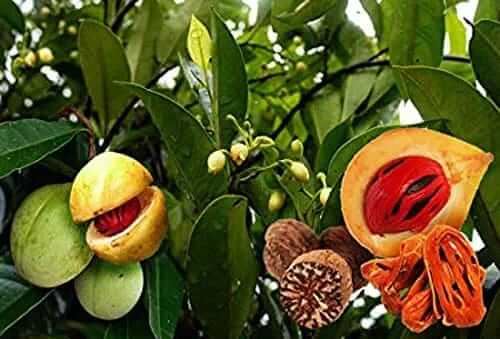
Munnar is a hill station located directly east of Kochi and approximately 1,700 meters above sea level. It is known for its sprawling tea and spice plantations, a lake surrounded by rolling hills, misty mountains, virgin forests, waterfalls, and hiking trails. You may also enjoy the flower garden and botanical garden where you will see different variety of plants and herbs. Boating is available at Mattupetty Dam and Kundala Dam and allows you to enjoy the stunning scenery. Enjoy tea tasting sessions, trekking, and breathtaking views. At Munnar Farm Spices, see these spices growing: Pepper, Cardamom, Nutmeg, Ginger, Turmeric, Cinnamon, Clove, Coffee, Allspice, Cocoa, Vanila, Curry leaf, Chilly (photo shows nutmeg)

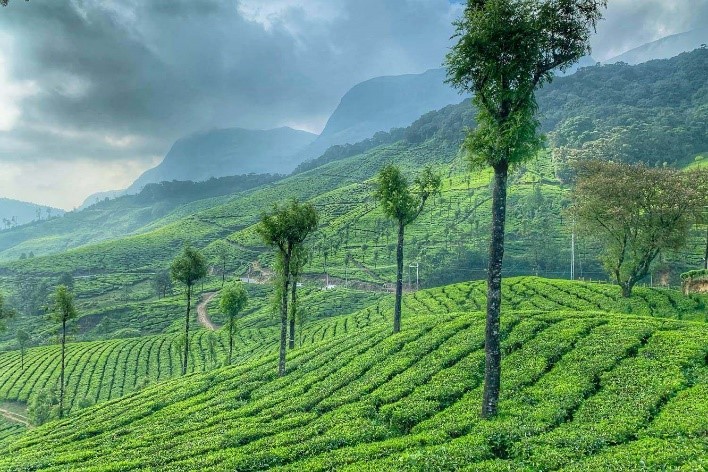
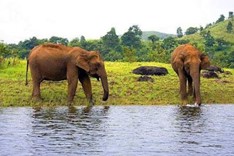
Located about 100 kilometer south of Munnar and about 300 kilometers from Trivandrum is town of Thekkady, the Periyar Tigar Reserve, and elephant reserve, and Periyar National Park. Surrounded by plantations for coffee, tea, and spices, Thekkady offers a rustic atmosphere, sophisticated tourist facilities, and a wide variety of things to see and do. Boating on Periyar Lake, a very large reservoir, is a great way to spot elephants, tigers, Indian bison, and various species of birds. Tourist facilities in the Periyar Tiger Reserve are described
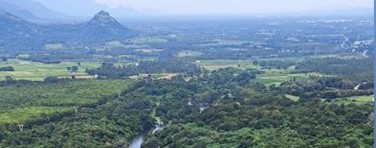
Neyyar Wildlife Sanctuary, just 32 kilometers from Trivandrum, is in the Sahyadri mountain range and covers a total area of 128 km2 (49 sq mi). The diversity of its flora makes the sanctuary an ideal gene pool preserve. Mammals include tiger, leopard, sloth bear, elephant, sambar, barking deer, bonnet macaque, Nilgiri langur and Nilgiri tahr. 176 Species of birds, 30 species of reptiles, 17 species of amphibians and 40 species of fishes have also been found and a Crocodile Rehabilitation and Research Centre and Neyyar Elephant Rehabilitation Centre complex are within the area.

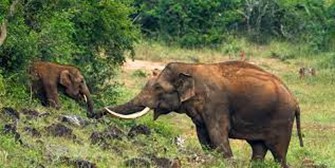
Beaches Near Trivandrum
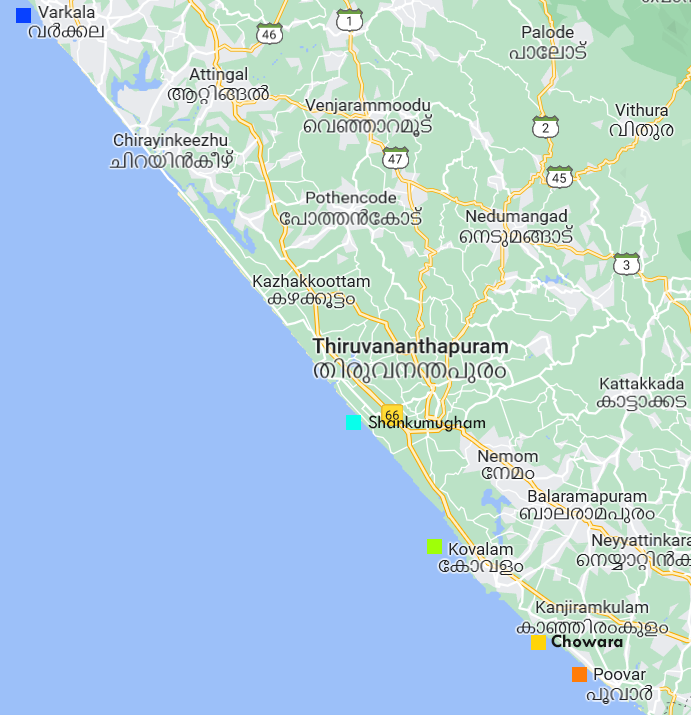
Varkala Beach
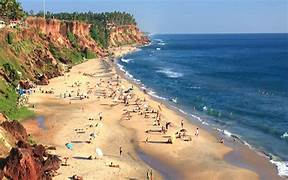
Varkala Beach: Located about 45 kilometers north of Trivandrum. Varkala Beach is renowned for its stunning cliffs and a unique cliff-side pathway that offers panoramic views of the Arabian Sea. It is known for its vibrant beachside shacks and yoga and Ayurveda centers. It is also known for a mineral springs with curative properties. It is believed that when you dip to the holy waters at this beach will eliminate body impurities and all the sins of the soul. The Janardhanaswamy Temple, a 2000 year old shrine, stands on a cliff overlooking the beach. The Sivagiri Mutt, founded by the great religious reformer and philosopher Sree Narayana Guru (1856 – 1928) is also close by. Sree Narayana Guru propagated the ideology: “one caste, one religion and one God”, in a society torn by the taboos of caste system. The Samadhi (the final resting place) of the Guru here attracts thousands of devotees every year.
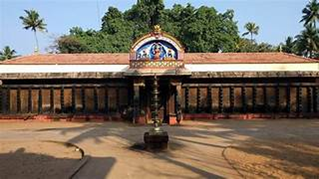
_Oct8.png)
Shankumugham Beach
It is directly west of the Trivandrum airport. Shankumugham Beach features features a large sculpture of a mermaid and is a great place to watch the sunset.
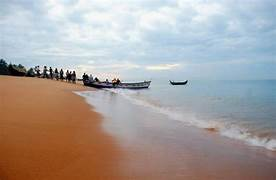

Chowara Beach is a serene and less crowded beach located about 10 kilometers south of Kovalam. It offers a tranquil atmosphere, making it a perfect spot for relaxation and enjoying the natural beauty of the area.
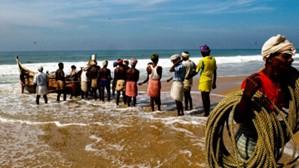
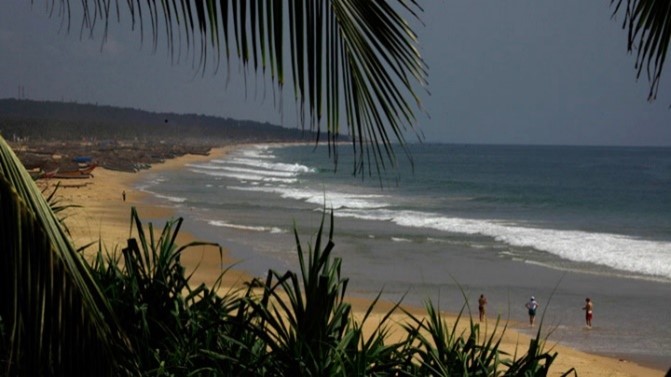
Poovar is a beautiful, secluded beach located around 30 kilometers south of Trivandrum. It’s known for its estuary where the Neyyar River meets the Arabian Sea, which includes Poovar Lake and many islands. You can rent a houseboat or ride a powerboat to explore the backwaters, fishing villages, estuaries, and mangroves filled with a wide variety of birds. The friendly fishing community residing in the village is unique because of its customs, cultures and traditions.
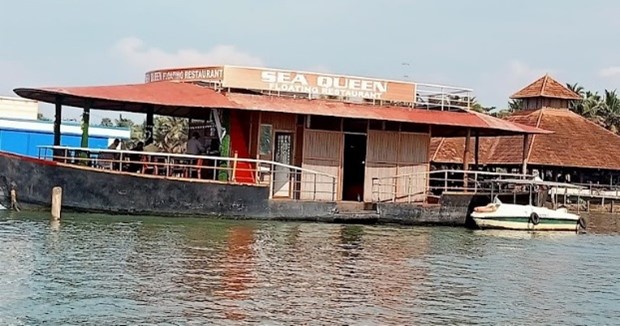

Kovalam Beach
Kovalam Beach is located 16 kilometers south of Trivandrum. It is known for its crescent-shaped shoreline, pristine waters, and a range of water sports and activities. Lighthouse Beach, Hawa Beach, and Samudra Beach are the three main parts of Kovalam Beach. There are many shops and restaurants along the shore. Enjoy swimming, sunbathing, and Ayurvedic massages in the beachside resorts
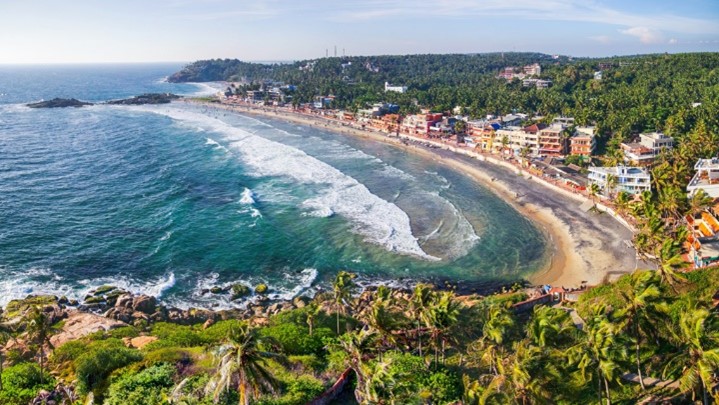
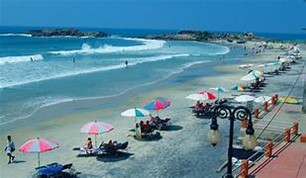
Kochi

Kochi is the heart of Kerala also known as Queen of Arabian Sea. Kochi is a paradise for tourists where you can experience the glimpse of pre-historic, historic and modern era. The city is the financial capital of Kerala with booming IT industry and other trading endeavors.
Kochi was the first European colony occupied by Portuguese, Dutch and British respectively, and made it a Princely state. It was considered to be the center for spice trade during that period. Greeks, Romans, Jews, Syrians, Arabs and Chinese were the main traders of spices. On your Kochi tour take time to visit and experience the historical and cultural wonders of the city. A must visit to the Indo-European style of architecture are the old churches and temples like Santa Cruz Basilica, Church of Saint Francis, Vallarpadam Church, Kadamottom Church, St. Antony’s Shrine, Chottanikkara Bhagavathy Temple, Ernakulathappan Temple, Ettumanoor Shiva Temple, and Poornathrayesa Temple. If you are a nature lover visit the following: Cherai Beach, Vypeen Island, Fort Kochi Beach, Kodanad elephant Training Centre, Mangalavanam Bird Sanctuary, and Marine Drive.

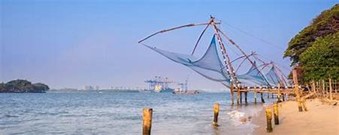

If you are a nature lover visit the following: Cherai Beach, Vypeen Island, Fort Kochi Beach, Kodanad elephant Training Centre, Mangalavanam Bird Sanctuary, and Marine Drive. If you are interested in the colonial period include these places in your itinerary: Mattancherry Jews Street, Fort Kochi, Willington Island, Bolgatty Palace, Dutch Palace, Bastion Bungalow, VOC Gate, and David Hall etc.
Napier Museum - Art & History
Napier Museum, in the center of Thiruvananthapuram City, is one of the oldest art and natural history museums in India and is famed for its collection of artistic, cultural and antique objects. In 1873, Lord Napier, the then Governor General of Madras, commissioned the museum. A British architect blended native and British architecture to form the Indo-Saracenic structure. The building is red with stained glass windows and huge towers. In 1880, the then King of Travancore, Ayilyam Thirunal opened the museum to the public
The museum stands in the center of a public garden which also houses the oldest zoo in India. Visit one of the landmarks of Trivandrum. While enjoying the museum, you can also explore the zoo and the garden.


Arts of South India: Carnatic Singing
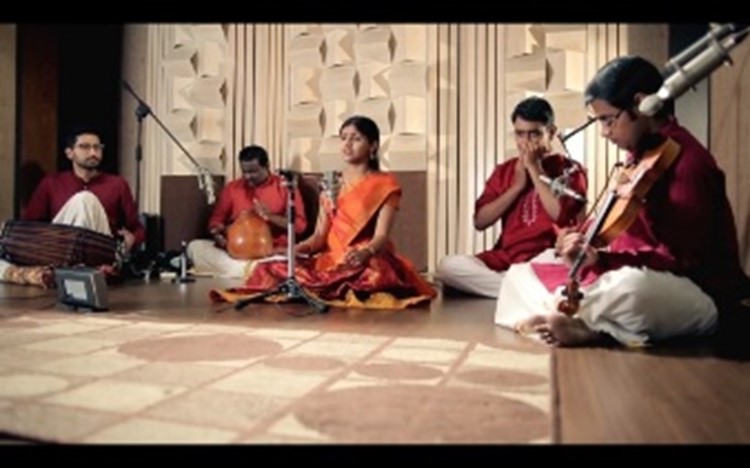
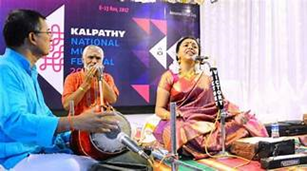
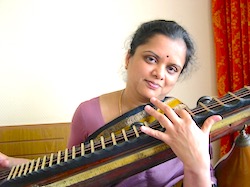
Kathakali Classical Dance in Kerala, India

Kathakali is a classical form of Indian dance. It is ancient and classical in nature and holds centuries of tradition and culture. It is not simply a dance-drama but an act of devotion featuring the universal struggle between good and evil.
Kathakali is based on Hinduism and evolved from temple art forms in the 17th century. It is a highly charged powerful drama that combines devotion, drama, dance, music, costumes and make up to produce one of the most impressive forms of sacred theatre in the world. Kathakali brought humanity into Hinduism to express emotions that go beyond words. The temple rituals, first performed in secret, evolved into a vibrant drama that embraces the essence of what it is to be human.
Kathikali is traditionally performed by male dancers. The pomp and magnificence of Kathakali is partly due to its décor, part of which is the kireetam (huge ornamental headgear) and the kanchukam (over sized jackets), and a long skirt worn over a thick padding of cushions. The artists completely immerse themselves and the audience into the story they’re describing.
_Aug27.jpg)
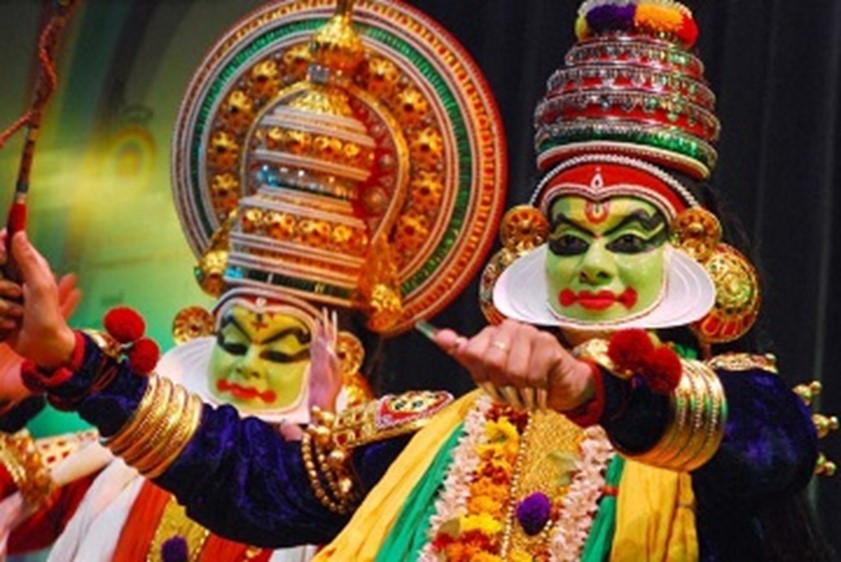
Other Places to Visit in Kerala
Tour Suggestions
Shree Padmanabhaswamy Temple, Trivandrum: widely considered the world’s richest Hindu temple. The temple is built in an intricate fusion of the Kerala style and the Dravidian style of architecture, featuring high walls, and a 16th-century gopura. The principal deity is Padmanabhaswamy (Vishnu), the tutelary deity of the Travancore royal family. The tour includes information about the architecture and Hindu beliefs related to the deities
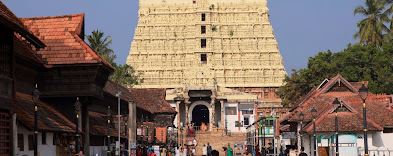

Kanakakunnu Palace, Thirvandrum: One of the last architectural vestiges of the colonial era, it was built by a Travancore king around 1900 with a Kerala style facade. Inside you will see massive crystal chandeliers and an array of exquisite pieces of royal furniture – a testimony to the lavish lifestyle of the Thirunal kings who had a penchant for music and art. It is set on the crest of a small hill lush with meadows, grooves and flowering shrubs.


Kerala Arts & Crafts Village: Numerous shops displaying handicrafts using wood, paper quills, clay, coconut husk, terracotta, thread, jute, dry flowers, glass arts, paintings, ivory, bronze, etc. Staff/Artists explain the art works and the materials used.


Kanyakumari, Tamil Nadu: A coastal town in the state of Tamil Nadu on India’s southern tip. Visit the Gandhi Memorial, Bagavathi Amman Temple (dedicated to a consort of Shiva), Our Lady of Ransom Church (a center of Indian Catholicism), Padmanabhapuram Palace, Suchindram Shree Thanumalayan Swamy Temple, Thiruvalluvar Statue, and Sunset Point.
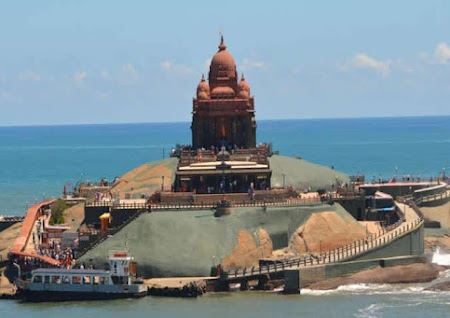
Athirapally Falls: Witness the spectacular Athirapally Falls, often referred to as the “Niagara of India.” These majestic waterfalls surrounded by lush greenery are a treat for nature lovers.

Touring Kerala by Houseboat
by Linda Reardon
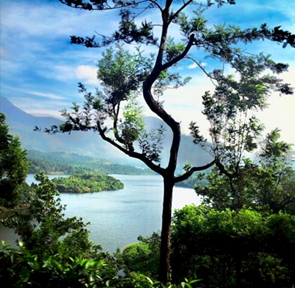
Initially when a friend first suggested a trip to India, I wasn’t sure, but I was curious and definitely fascinated. It took a couple of conversations with friends to highlight the fact that a trip like that could be a once in a lifetime chance and I that should be making the most of every opportunity to explore this beautiful world. India, of all places, held so much mystical intrigue and of course being the home to some of the most incredible romantic monuments, I felt the pull to see them for myself and with that I jumped in and decided to go for it. I have never regretted that decision and the trip was incredible, offering a life changing perspective for me.
With so many amazing places to travel and see in India, it is hard to contain the words to narrow the focus enough to describe a single destination, but I will do my best to describe, in a nutshell, how I experienced the beautiful destination of Kerala.
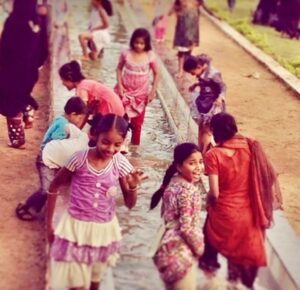
Arriving in Kerala felt like a stark contrast to my travels leading me there. Being in the land of extremities, I had experienced many beautiful sights, such as the Taj Mahal and also explored the Golden City of Jaisalmer. The road trip into Kerala allowed a few beautiful stops along the way. Driving closer to Kerala, there was a notable change, in atmosphere, sights, pace and feel. It was like driving into the tropics, and it had a holiday destination feel to it. Lots of visible water, coastline and the interesting backwaters of the lakes and rivers as well as the most beautiful mountain sightings. Hills covered in lush, green tea trees, palm and nut trees, everything in Kerala seemed to offer beautiful vistas, at every angle.
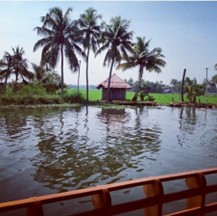
Morning
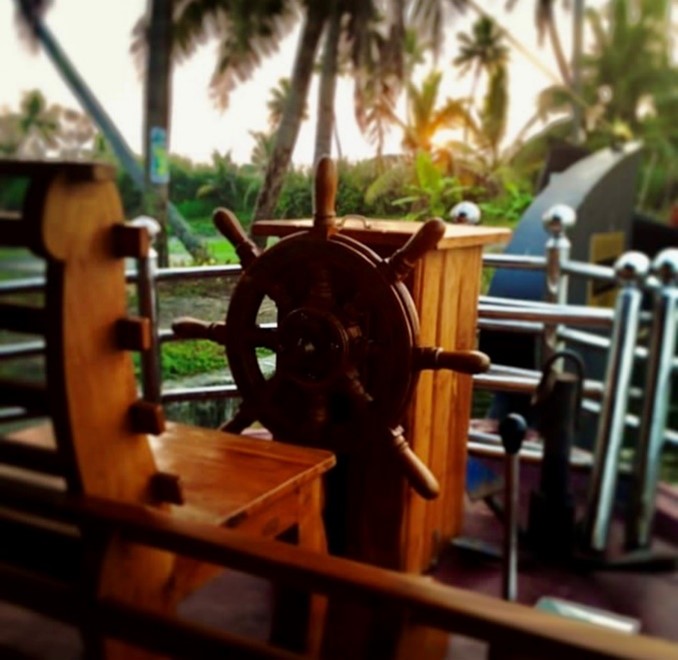
The plan was to spend a couple of lazy days and nights slowly cruising the Kerala backwaters of Alleppey. For two nights we stayed on a houseboat (see pics). The cruise was tropical, calm, and provided a delightful reprieve from the hustle and bustle of traveling the land. While I won’t highlight any cruise in particular, there were many to choose from and all offer similar deals to escape, a quick Google will locate them for you.
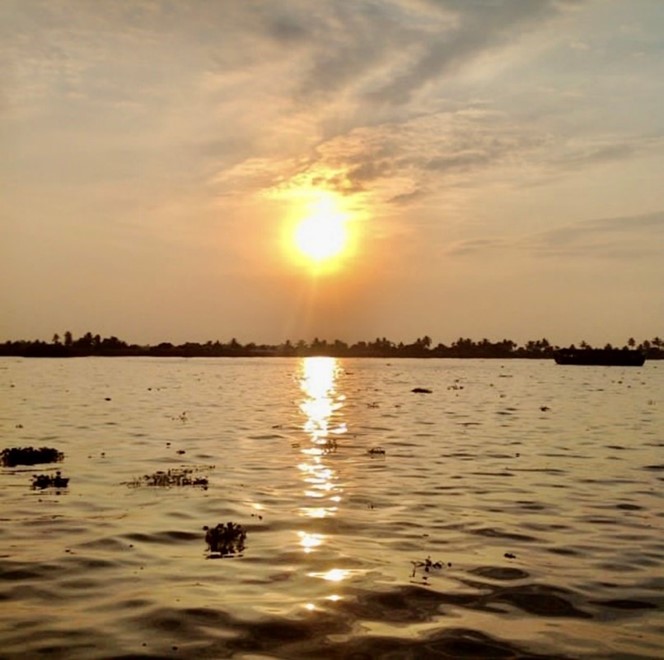
Most of the houseboats on the Periyar River are classed as “Luxury Houseboats.” They were beautiful, provided clean and comfortable beds and with everything you might need on a houseboat. The food onboard was prepared by a chef and was tropical, fresh, and next level delicious! As with all of my travels through India, there was a great selection of veg and non-veg to choose from. Kerala offered many beautiful seafood and fish options; the delicious seafood curries were second to none.
In addition to the cruise, we joined a Spice Trail walk and I highly recommend this if you are interested in seeing spices and incredible trees while hearing some very interesting commentary on these. The gentle, tropical breeze is the perfect accompaniment to cool the walk, and it wafts the sweet and spicey aromas of the trees and plants through the air as you walk. These pictures show Kerala’s backwaters from the houseboat in the morning and evening.
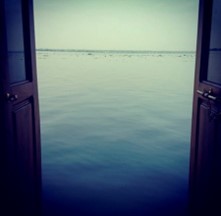

Kanyakumari, Tamil Nadu: A coastal town in the state of Tamil Nadu on India’s southern tip. Visit the Gandhi Memorial, Bagavathi Amman Temple (dedicated to a consort of Shiva), Our Lady of Ransom Church (a center of Indian Catholicism), Padmanabhapuram Palace, Suchindram Shree Thanumalayan Swamy Temple, Thiruvalluvar Statue, and Sunset Point.
Memories of Traveling in South India
by Renee Friedman

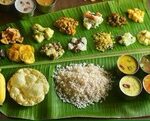 India is a place in which one could spend two years or two weeks and still feel it is a country of unfolding mysteries. It is a continent of 16 states, each with its own distinct language, governance, culture and flavor. Traditionally, the south of India tends to be a more easy going place to travel than the north. Kerala is the southernmost tip. The food is delicious and differently spiced than the north, with coconut being a key ingredient- vegetarian and meat options abound. Palm trees, explorations of the culture and political structure, wildlife, nature and beaches await you. This is a place to come to relax and have a slight reprieve from the hustle and bustle of other parts of India.
India is a place in which one could spend two years or two weeks and still feel it is a country of unfolding mysteries. It is a continent of 16 states, each with its own distinct language, governance, culture and flavor. Traditionally, the south of India tends to be a more easy going place to travel than the north. Kerala is the southernmost tip. The food is delicious and differently spiced than the north, with coconut being a key ingredient- vegetarian and meat options abound. Palm trees, explorations of the culture and political structure, wildlife, nature and beaches await you. This is a place to come to relax and have a slight reprieve from the hustle and bustle of other parts of India.
Kerala is a socialist state. As a result, education is free to everyone-regardless of caste or gender. It’s the only state with a 97% literacy rate and a place where technically no one goes hungry or homeless. I’m not sure the United States could make the same claim. The official language is Malayalam (surya and chandra are words for sun and moon) but almost everyone speaks English as well; making the traveling such a pleasant undertaking. There is not the blatant evidence of poverty we might see in certain other parts of India.
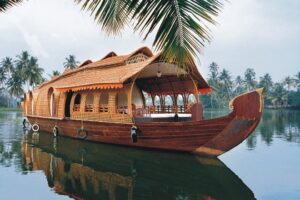
 What drew me to Kerala was multi-fold. There was the chance for a yoga retreat coupled with study of Ayurveda science for which the region is famous. Ayurvedic herbal remedies and massage are easily obtainable and so enjoyable. I still remember the soothing effects of the massage and the advice on Ayurvedic cures. As I picnicked on the shore of the ashram, I could hear resounding roars carried across the river from the lion park. I eagerly experienced the boats rides down river past fascinating architecture, through stunning nature viewing magnificent wildlife. Afterwards, I anticipated heading towards the picturesque sandy beaches of Kovalam where I could sprawl and relax on the sands of the Arabian Sea or partake in any number of water sports.
I was traveling for a few months with a friend and when it was time for me to return to Canada and my quotidian obligations, she was so delighted with Kerala’s magic, she cancelled her return flight and stayed on for several more months to study Malayalam and south Indian cooking. I hope this tourist mecca similarly
What drew me to Kerala was multi-fold. There was the chance for a yoga retreat coupled with study of Ayurveda science for which the region is famous. Ayurvedic herbal remedies and massage are easily obtainable and so enjoyable. I still remember the soothing effects of the massage and the advice on Ayurvedic cures. As I picnicked on the shore of the ashram, I could hear resounding roars carried across the river from the lion park. I eagerly experienced the boats rides down river past fascinating architecture, through stunning nature viewing magnificent wildlife. Afterwards, I anticipated heading towards the picturesque sandy beaches of Kovalam where I could sprawl and relax on the sands of the Arabian Sea or partake in any number of water sports.
I was traveling for a few months with a friend and when it was time for me to return to Canada and my quotidian obligations, she was so delighted with Kerala’s magic, she cancelled her return flight and stayed on for several more months to study Malayalam and south Indian cooking. I hope this tourist mecca similarly 

